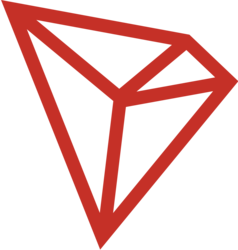Harmony Protocol aims to scale blockchain to 10M transactions/second and 100-millisecond latency. Harmony will bring 1,000x speed and capacity to the next generation of the decentralized economy, enabling marketplaces for 10B people and 100B devices.
Idea
Harmony’s slogan is “Let’s build an open marketplace at Google-scale. To 1,000x the decentralized economy. By speed & incentives”. Google – no more, no less. So it promise to provide a consensus protocol over the open Internet at 10 million TPS with 100-millisecond latency and at most 0.1% fee. Harmony’s goal is to be 1,000+ times faster and cheaper than Bitcoin and Ethereum. Target – to rebuilding the decentralized economy with 10x innovations in all components: transport network (Google’s UDP, Bloom tables, 5G mobile), consensus protocol (Byzantine committees, acyclic graphs, monopolist fees), and system tooling (unikernels, multi-core in Rust, zero-copy streaming).
Why to be interested in Harmony? The projects authors mean that communication is the key to the future of humans and machines to create in harmony. And there are some limits. Bandwidth must scale to 10M tx/sec to support data from supply chain IoT devices or energy grids. All of them must settle agreements within 100 milliseconds to support instant reactions for autonomous robots or on-chain quotes in exchanges. However this is real – they said. If to believe in Harmony – they employ technical innovations that are already proven in research and implementation. For example, Google’s UDP currently powers 35% of its traffic (or 7% of the Internet) with 50% latency improvement, OmniLedger Byzantine protocol benchmarks to 13,000 tx/sec and 1.5 sec latency with 1,800 hosts, while unikernels in Rust achives 10M concurrent connections on a standard 96-core machine on Amazon Cloud.
So the question is – How? OmniLedger achieves 13,000 tx/s with 1,800 hosts in a research benchmark. It assumes single core, 20Mbps and 100ms network. The boosts to 10M tx/sec might come from: 100x more nodes (including light clients), 10x network (1Gb and 20ms world round trip with backbone relay), and 10x manycore graph processing.
Protocols and Optimizations
After extensive research, Harmony team concludes that OmniLedger is the most scalable permissionless protocol. The document on it named “A Secure, Scale-Out, Decentralized Ledger via Sharding” is peer reviewed in the top research conference IEEE Symposium on Security and Privacy. OmniLedger is tested with 1,800 hosts (25 committees, each consisting of 72 nodes) and 13,000 TPS.
To make it possible to achieve 10M TPS, the authors suppose to use some proved techniques, including:
- Representative sharding
- Gradual transition
- Atomic shard-commit
- Parallelizing blocks
- Pruning checkpoints
- Optimistic confirms
All these in OmniLedger’s terminology. And looks impressive.
Tokenomics
Ticker: ?
Token type: OWN WALLET
Total Tokens: 21,000,000,000
Available for Token Sale: 20%
Token Issue: ALL UNLOCKS START FROM THE LISTING ON AN EXCHANGE.
Token distribution:
- Sales & floating: 20% tokens (40% no lockup, 10% monthly over 6 months; for bonus, 100% release after 1-year lockup)
- Developer & community: 40% tokens (1-year 28% lockup, 1.5% monthly over 4 years)
○ Open benchmark, mining, airdrops
- Foundation & research: 28% tokens (28% no lockup, 1.0% monthly over 6 years)
○ Reviewed publication, research grants, reserve
- Founder & team: 12% tokens (1-year 28% lockup, 2% monthly over 3 years)

Use of funds:
- 40% for technical development of protocol platform
- 20% for community engagement, developer programs
- 15% for marketing, business development
- 10% for operations, equipment, cloud servers
- 10% for collaboration with academic research
- 5% for compliance, legal, finance

Some info about caps of closest projects:
- EOS, valued $14B.
- Zilliqa, valued $700M.
- Hashgraph, raising $300M.
- Thunder, valued $100M.
- Dfinity, raised $100M.
- Kadena, raised $12M.
- Algorand, raised $4M.
Team
Considering part time, the team includes four Ph.D., 3 Ex-Google, 2 Ex-Apple, graduates from Berkeley, CMU, Waterloo, Penn and Harvard.
Stephen Tse – UPenn PhD on compiler and security protocols, Microsoft Research, Google Maps infrastructure engineer, founder of mobile search Spotsetter acquired by Apple, principal engineer at Apple Maps search ranking, TGI-ML/Blockchain for ex-Google founders.
Nicolas Burtey founded a VR video startup in 2012 that grew to 40 people and raised $10M . Orah, previously known as VideoStitch, served the needs of thousands of professional content creators in 62 countries by selling GPU-driven live stitching software and 360° cameras. Nicolas has a bachelor degree in mathematics and computer science, and a master degree in computational photography. Nicolas graduated from the Université de Besançon (France).
Alok Kothari has worked on deep learning models for natural language understanding at Apple Siri. He has conducted research in word sense disambiguation, machine translation, and social media retrieval. Alok has published at top conference venues including SIGIR, ICWSM and EMNLP. His research paper won the best dataset award at ICWSM 2013. Alok published a best seller book “Game Changers,” chronicling successful graduates from his alma mater IIT Kharagpur in India. He obtained his master degree in artificial intelligence (language technologies) at the Carnegie Mellon University.
Rongjian Lan was a search infrastructure engineer for Play Store at Google. Co-chair of ABC Blockchain Foundation with 100+ engineers from Google, Facebook, Linkedin as members.
Hakwan Lau is a full professor at University of California, Los Angeles. He specializes in neuroscience and machine learning.
Trausti Kristjansson has worked at the industry’s most respected research labs (Microsoft Research, IBM Research, Google Research), founded full-stack startups.
Consultants, Expertise and Collaborators
Georgios Fainekos – Academic Consult – is a tenured professor at Arizona State University. He specializes in formal methods of cyber-physical systems, swarm robotics, and machine learning for real-time planning. Georgios did his doctoral studies at the General Robotics, Automation, Sensing & Perception Labs (GRASP Labs) of the University of Pennsylvania.
Zi Wang worked at Google from 2006-2015 on Chrome, Google [X], Android and Nexus. He was the first Global Creative Director for the Google hardware division and co-founded a Google research lab with a $20M budget.
Aaron Li started programming since the age of 7 and started mining Bitcoin since 2011. Aaron was a researcher at the Google Machine Learning team and a founding engineer at Scaled Inference, an AI startup advised by Prof Michael Jordan.
Navneet Singh led mobile engineering at Google for 6 years. He has also been the Senior Vice President at the largest payment processor WorldPay and the Head of Data Science at the mobile payment provider Ezetap.
Roadmap
- 2018 Q2
○ Validating OmniLedger protocol in Go sustains 10k tx/sec and adversarial attacks with 10k nodes
○ Completing legal setup and distribution model for tokens
○ Forming a team of 5 engineers and raising a $?M seed round
- 2018 Q3
○ Opening public benchmarks for 10k nodes
○ Validating lock-free and allocator-free algorithms in Rust scale linearly on a 96-core unikernel on Amazon Cloud
○ Validating Google’s UDP sustains broadcast at 100ms latency with 10k nodes and saturated 10 Gbps links
○ Raising $?M as the initial private token presale
- 2018 Q4
○ Opening public mining of Harmony tokens with testnet and token economics
○ Deploying to 10k devices for IoT, autonomous robots, supply chain operations
○ Raising $?M as the final private token presale
- 2019
○ Deploying to 100k tx/sec for payments and financial institutions
○ Deploying to 100k nodes with 100k tx/sec and 1s latency
○ Listing Harmony tokens on crypto exchanges
○ Supporting contracts, anti-pooling, multi-signatures, mobile client
Interesting facts
Harmony will use some unique features and applications due to experience with geospatial data and machine learning. They are:
- Location oracles. It is a challenge to integrate smart contracts with oracles that serve as authenticated data feeds. Nodes must be able to independently verify an oracle’s consistency. So they can take the GPS signals of mobile or IoT devices as proof of location in applications.
- Decentralized Maps. Maps for geocoding and points of interest can be a showcase for decentralized applications in the real world. A good starting point for building decentralized maps on Harmony can be augmented reality games with incentives like Pokemon.
- AI Data Marketplace. Harmony will also serve as a high-volume data marketplace and optimize its machine learning performance to build a new decentralized economy based on data. The key aspects are privacy-preserving applications and transparent data usage. The effectiveness of multiparty computation and homomorphic encryption relies on high performance platform – such as Harmony hopes to build.
An additionally – Min, a subproject of Harmony, is a new programming language for writing smart contracts in an easier and safer way.
Conclusions
Very strong and experienced team. Cool collaborators and expertise. Tech whitepaper looks earnestly. Roadmap is realistic. Cool use of funds (40% for technical development of protocol platform).
But there are some contras. Token sale date and even cap are not set. No advisors as fact. No investors, partners. No yet good graphics in Whitepaper (diagrams granted by Coinstelegram).
Obviously the project is at the stage of the very beginning. But it is with very promising idea. And promising characteristics – from Ian Balina personally.
Coinstelegram Rating: Pre-High




























